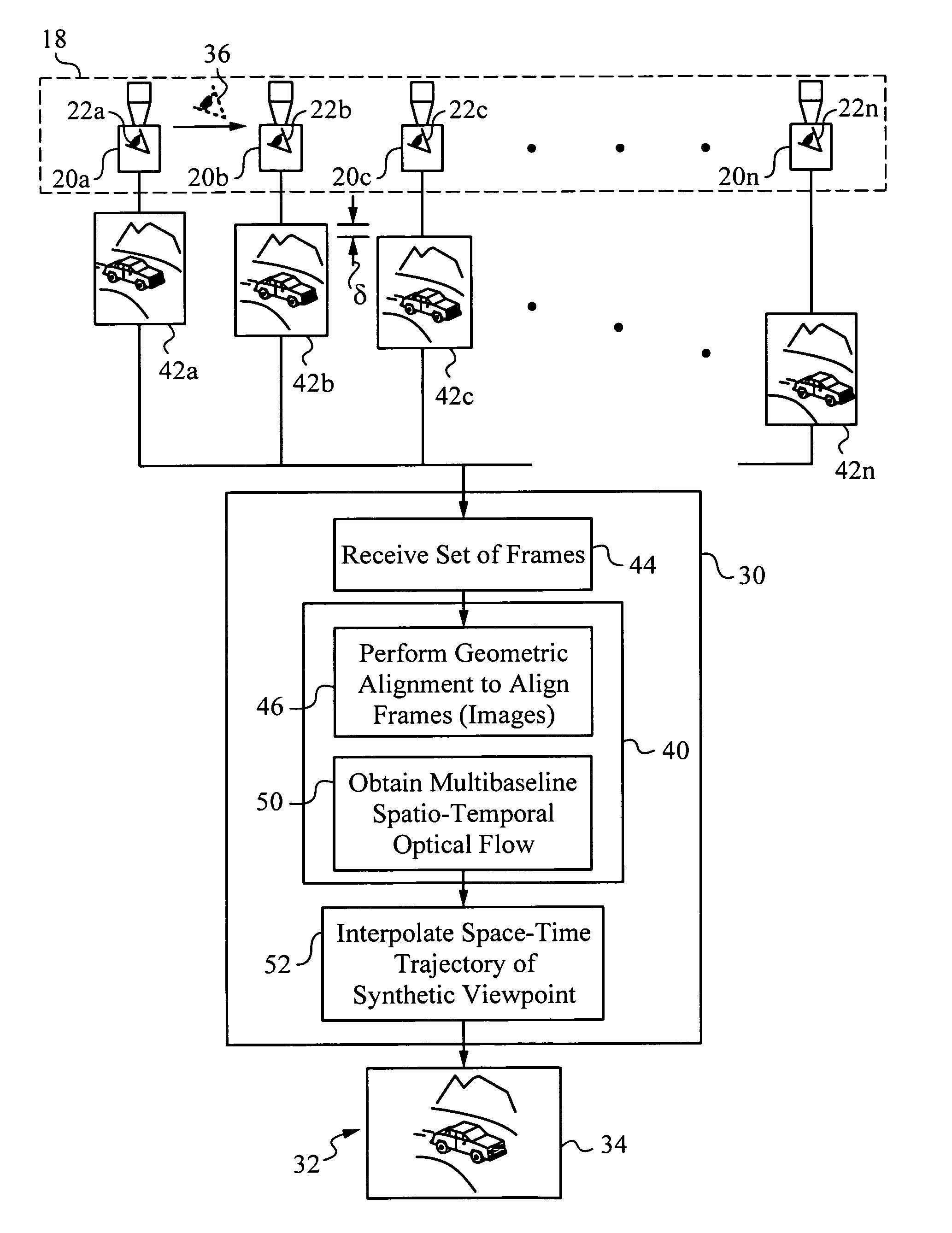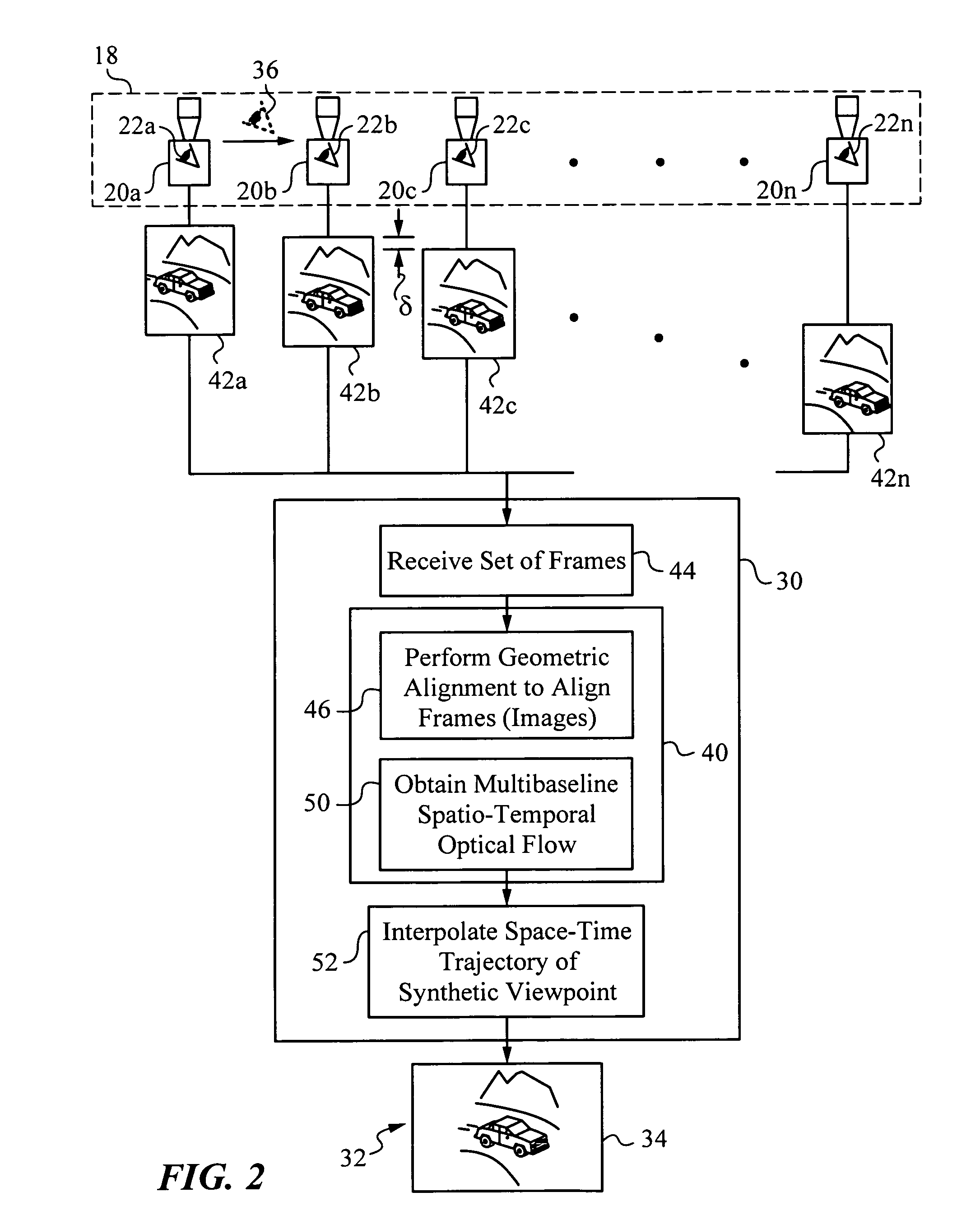Apparatus and method for capturing a scene using staggered triggering of dense camera arrays
a technology of camera array and camera array, applied in the field of apparatus and methods for capturing scenes with dense camera array, can solve the problems of limiting the highest achievable system frame rate, distortion cannot be corrected, rolling shutter distortion, etc., to achieve the effect of improving sampling accuracy, reducing computational load, and increasing temporal resolution
- Summary
- Abstract
- Description
- Claims
- Application Information
AI Technical Summary
Benefits of technology
Problems solved by technology
Method used
Image
Examples
Embodiment Construction
[0034]The present invention will be best understood by first reviewing FIG. 1, which illustrates a simplified schematic diagram of an apparatus 10 for capturing a three-dimensional region of interest 11 in a scene 12. Scene 12 contains static elements 14, here mountains and a road, as well as a dynamic element 16, in this case a moving car. Region of interest 11 contains dynamic element 16, i.e., the car, and its immediate surroundings. In the present embodiment, region of interest 11 is considered to be confined to a single object plane 13. It should be noted that using plane 13 is a simplifying assumption and represents only one albeit useful approach. Nonetheless, a person skilled in the art will recognize that other surfaces or geometrical assumptions about the location of region of interest 11 in scene 12 can be made.
[0035]Apparatus 10 has an array 18 of n video cameras 20a, 20b, . . . , 20n positioned for viewing region of interest 11 in scene 12. In the present embodiment vid...
PUM
 Login to View More
Login to View More Abstract
Description
Claims
Application Information
 Login to View More
Login to View More - R&D
- Intellectual Property
- Life Sciences
- Materials
- Tech Scout
- Unparalleled Data Quality
- Higher Quality Content
- 60% Fewer Hallucinations
Browse by: Latest US Patents, China's latest patents, Technical Efficacy Thesaurus, Application Domain, Technology Topic, Popular Technical Reports.
© 2025 PatSnap. All rights reserved.Legal|Privacy policy|Modern Slavery Act Transparency Statement|Sitemap|About US| Contact US: help@patsnap.com



